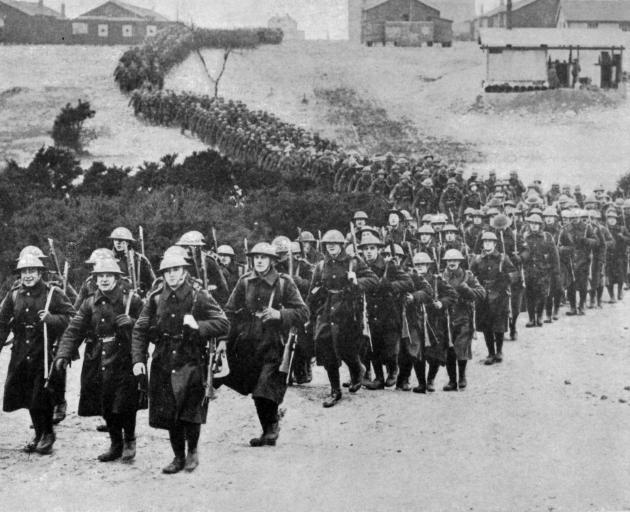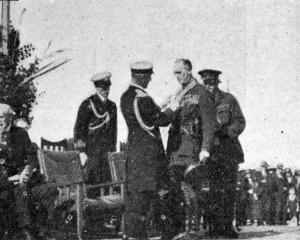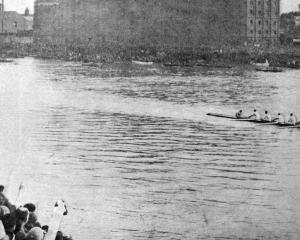
Field-Marshal Haig reported: "Our troops, despite these difficulties and disadvantages, carried out the first assault and subsequent attacks in almost exact accordance with the arranged time-table. Nineteen deep mines were exploded simultaneously at 3.10am, wrecking large portions of the front and support trenches, including extensive dug-out and mining systems. Immediately upon the mine explosions our guns opened fire, and the infantry attacks carried the whole front line system within a few minutes.
"Our troops immediately pressed on up the western slopes of the Messines-Wytschaete ridge, and within three hours of the storming the entire crest-line was captured from the south northwards. Shortly afterwards the whole of Messines was captured, and we also completed the capture of Wytschaete village before mid-day after hand-to-hand fighting. Our troops in the second stage of the attack pushed down the eastern slopes of the ridge and advanced against a powerful line of rear defences. We captured the village of Wostavern during the afternoon; it lies just westward of the centre line. Practically the whole of this trench system is in our hands, and by nightfall we had gained the whole of the day’s objectives."
VC for North Otago soldier
London: Thirty Victoria Crosses have been gazetted, including six to Australians and one to a New Zealander — Private Donald Forrester Brown, of the infantry. His company had suffered very heavy casualties in officers and men from machine-gun fire. Brown, with a comrade, reached within 30 yards of the enemy guns, killed four of the gun crew, and captured the gun. His company was again similarly held up, when Brown and a comrade, with great gallantry, rushed the gun and killed the crew. The company was then heavily shelled, but Brown’s contempt of danger and coolness kept up the men’s spirits. Subsequently, as Sergeant Brown, he made a single-handed attack upon a machine gun, killed the crew and captured the gun. Later, whilst sniping the retreating enemy, this gallant soldier was killed. Sergeant Brown is the third son of Mr Robert Brown, of the Polytechnic, Oamaru. He was 26 years of age, belonged to the North Otago Company, Second Battalion, Ninth Reinforcements, and went to Egypt, leaving New Zealand in January, 1916. After a short stay in Egypt he was sent to France, arriving at Marseilles in May, 1916, and he then went straight up to Armentieres, where he fell in the Somme offensive on October 1.
Sergeant Brown is another of the 530 representatives of Waitaki High School known to be in the fighting line to win distinction. He was at the school in 1908. A splendid footballer, and a good sport, he was highly respected by the rector, his mates, and fellow townspeople. Last evening a special service in honour of the late sergeant was held at Waitaki High School, when those present were addressed by Mr F. Milner (rector) who, after paying tribute to Sergeant Brown’s heroism, mentioned that 11 Waitakians had won the Military Cross, and 16 had been mentioned in despatches. This morning, at Columba Presbyterian Church, where Sergeant Brown attended, special reference was made to the honour awarded him.
A woman’s sacrifice
A typical case of the sacrifices some women are called upon to bear in connection with the war is illustrated in a Westport family. Mrs W. O’Neil, who lost her husband within the last two years, has seen a married son and two single sons, voluntary enlisters, off to the war. A fourth son was drawn in the ballot two or three months ago, and the last male member of the family, who had just come of age and registered himself, was immediately drawn in the ballot. — ODT, 11.6.1917.
• COPIES OF PICTURE AVAILABLE FROM ODT FRONT OFFICE, LOWER STUART ST, OR WWW.OTAGOIMAGES.CO.NZ












